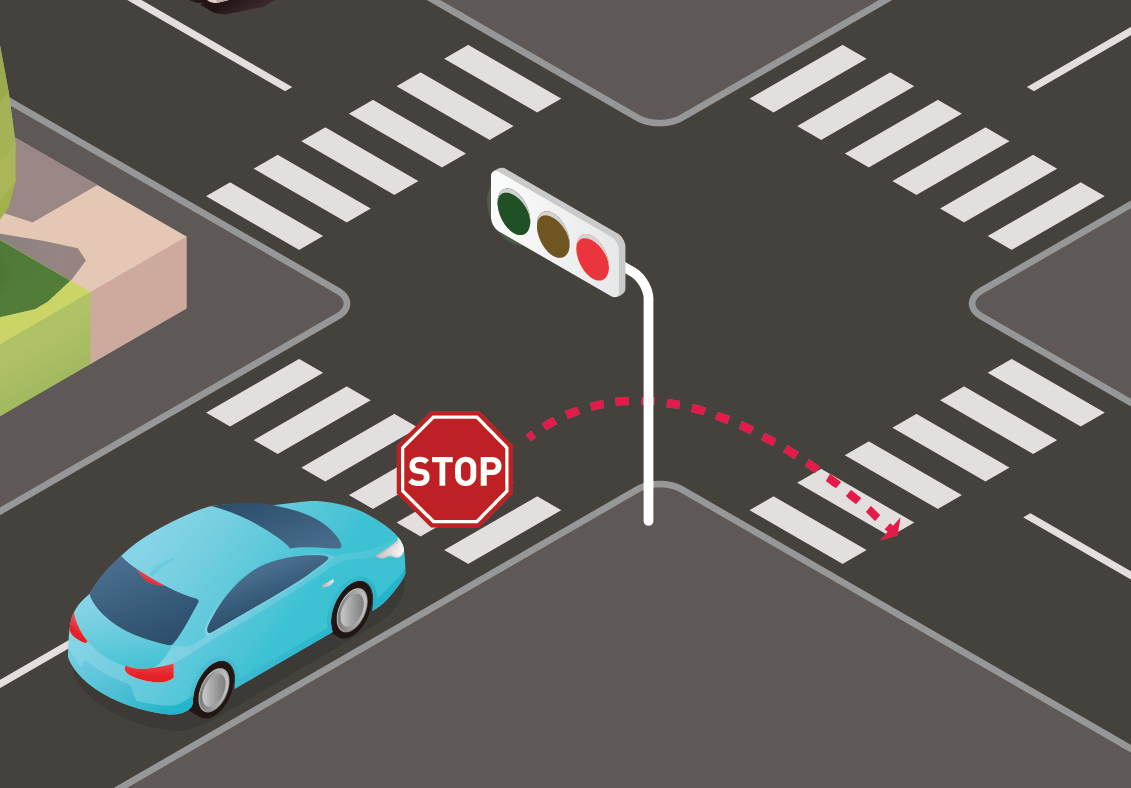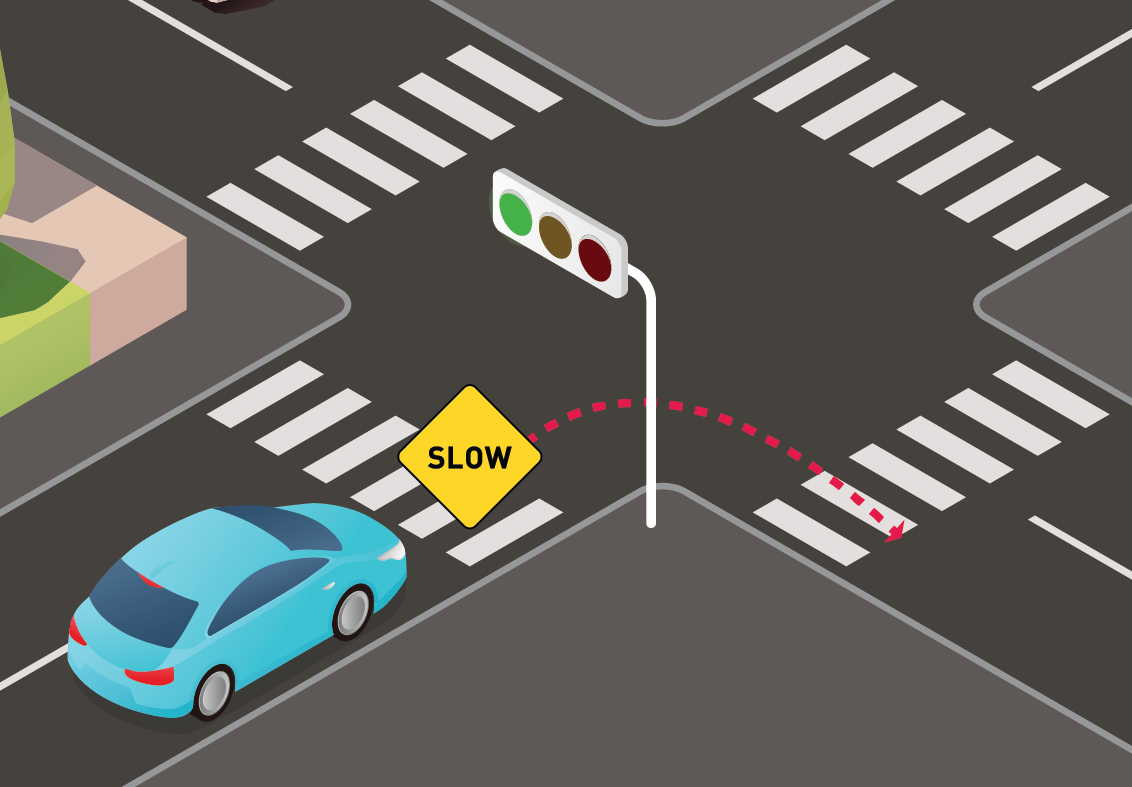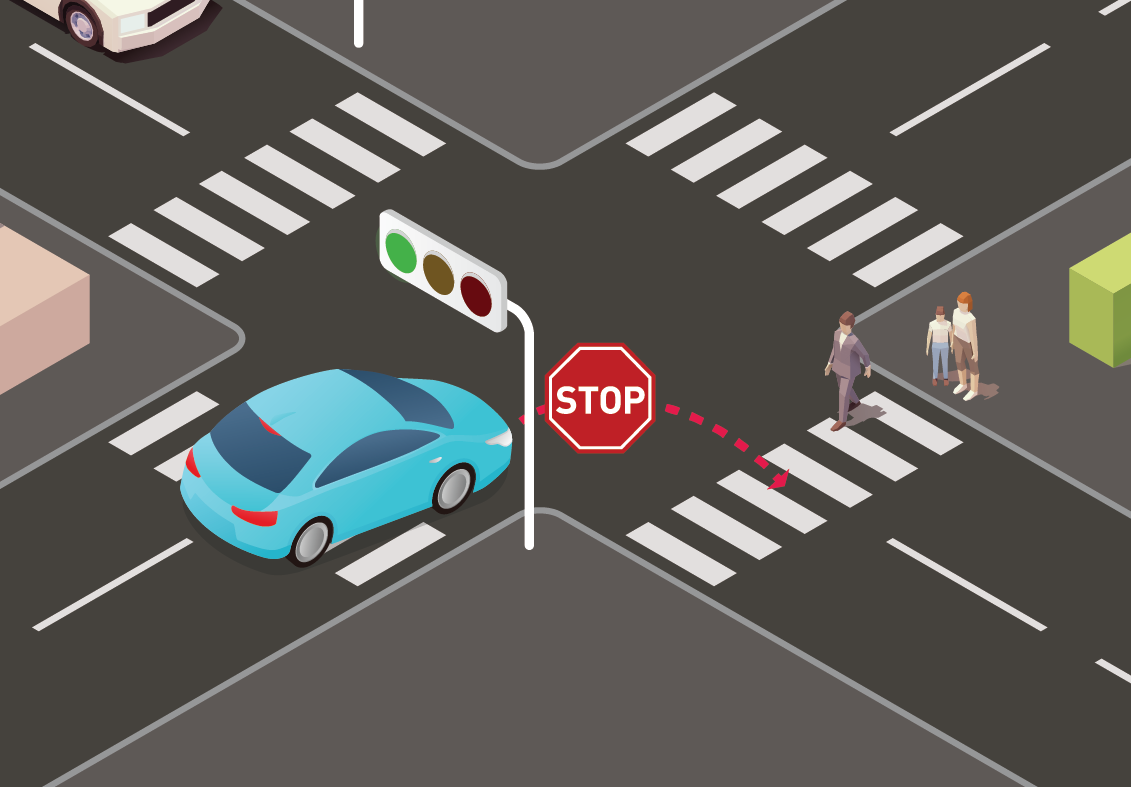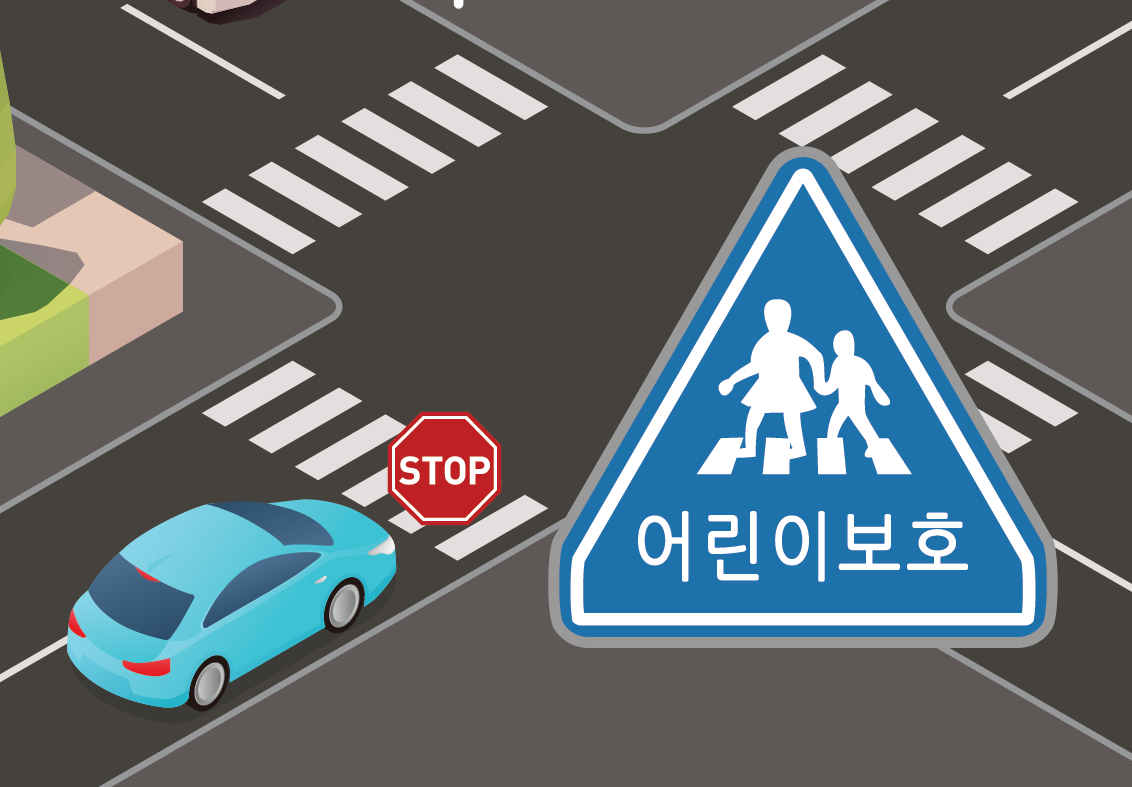Effective July 12, 2022
Korea has revised a road traffic law to help strengthen pedestrian protection obligations. The new revision states that drivers need to stop when turning right at intersections, especially when pedestrians are present on the crosswalk.
Additionally, drivers must make a full stop, regardless of pedestrians present, in Child Protection Areas.
If violated, drivers will be fined either 60,000 KRW with 10 demerit points or 70,000 KRW.
Please see below for additional clarification.
No Pedestrians: REd LIGHT

Red Light: Come to a full stop before slowly turning right.
No Pedestrians: Green LIGHT

Green Light: Slow down prior to turning right.
Pedestrians

Come to a full stop in front of the crosswalk. When pedestrians finish crossing and no more pedestrians are present, turn slowly right.
Child Protection Zones

Always stop regardless of pedestrians, if a traffic signal is not installed in Child Protection Zones.